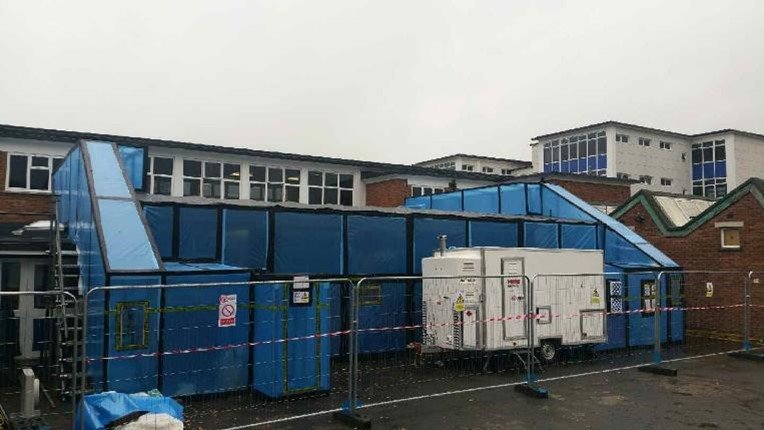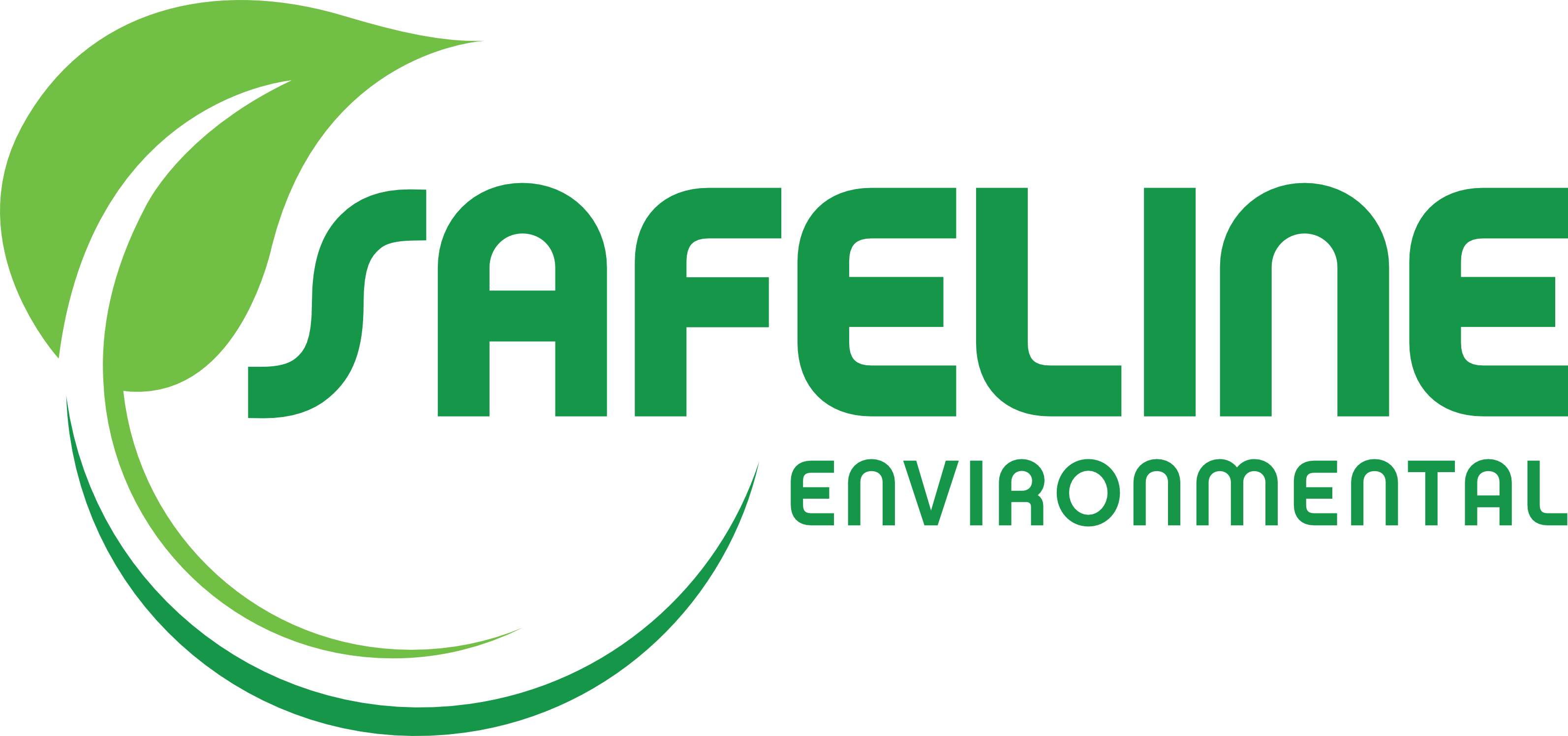If you have been looking for an asbestos glossary of terms, you are in the right place. Safeline’s list of asbestos-related words will help you get to grips with the most important asbestos terminology.
Common asbestos-related words
Here is our list of asbestos terminology, which is provided in an A-Z order:
- Abatement works – these are the tasks carried out to control the release of asbestos fibres or remove it from a building completely.
- ACM – This stands for Asbestos Containing Material. Even if a product has a concentration of just 0.1%, it still counts as ACM.
- ACOP – Approved Code of Practice is a document that offers in-depth advice on compliance and is available free of charge from the Health and Safety Executive HSE Publications - free leaflets to download.
- AIB – This is an acronym for Asbestos Insulating Board, which can be used for partitioning, fireproofing and moisture protection and much more.

Air Monitoring – This is the process of drawing a known volume of air through a small filter and then counting the number of asbestos fibres on the filter using a microscope to calculate the concentration of asbestos fibres in the air. The result is expressed as fibres per millilitre. Air monitoring can be carried out before, during and after the asbestos removal process.
- Amosite – This is the trade name given to grunerite 1 of 6 asbestiform minerals it is more commonly referred to as ‘brown’ asbestos.
- Asbestos cement – This type of asbestos-containing material will not absorb more than 30% moisture in its dry state. A competent asbestos surveyor can usually differentiate between an asbestos cement product and a board product (a licensed product). Asbestos cement can contain any type of asbestos mineral but usually contains Chrysotile (White) Asbestos.
Asbestos cement products in good condition do not require removal using a licensed contractor. However, they must still be removed by persons that have been trained, are insured, and employ the correct techniques to prevent spread of and exposure to asbestos fibres. All asbestos cement must be disposed of as hazardous waste.
- Asbestos Register – This is an official register that lists the areas where asbestos is present, the product type, the surface treatment, the condition, and the type of asbestos. The register will also include a material risk assessment, sometimes and priority risk assessment and usually recommendations on how to manage the risk.
- ASB5 – This is a document that must be submitted to the Health and Safety Executive (HSE) 14 days prior to commencement of licensable asbestos removal. This gives the HSE enough notice to arrange to come to site and inspect the works should they wish to.
- Bulk sample – This is a sample of a suspected asbestos containing material that is taken and then sent to a UKAS accredited laboratory for analysis.
- Background Air Monitoring – A UKAS accredited analytical laboratory analyst will sometimes carry this type of air monitoring out to ensure that there are no elevated fibre concentrations prior to commencement of asbestos abatement works. It is used as a baseline
- Chrysotile – This is the mineralogical name of 1 of 6 asbestiform minerals. It is commonly referred to as ‘white’ asbestos.
- Clearance Air Monitoring - A UKAS accredited analytical laboratory analyst will carry this type of air monitoring out during stage 3 of the 4-stage clearance process. The concentration of asbestos fibres must be less than 0.01/f/ml to pass.
- Certificate of Reoccupation – Is a document usually produced by the asbestos removal contractor for non-licensed asbestos removal tasks, to state all asbestos containing materials have been removed in accordance with the method statement as far as is reasonably practicable.
- Control limit – This is the maximum level of asbestos fibres that a worker can be exposed before the works need to be completed by a licensed asbestos removal contractor.
- CAR 2012 – The Control of Asbestos Regulations 2012.
- Crocidolite – The mineralogical name of 1 of 6 asbestiform minerals. It is commonly referred to as ‘blue’ asbestos.
- Duty holder – This is the individual responsible for the maintenance and repair of non-domestic buildings. They have a duty to manage asbestos in the building. This is outlined by Regulation 4 of the Control of Asbestos Regulations (CAR) 2012.
- Decontamination – Anyone who enters an area where asbestos removal is taking place must decontaminate themselves when they exit the premises to prevent the spread of, and exposure to asbestos fibres. Objects also need to be decontaminated.
- DCU – Decontamination Unit. This piece of equipment is placed under negative pressure with an air filtration system. It is divided into 3 compartments, a dirty stage, a shower compartment, and a clean stage. Its primary purpose is to ensure that the asbestos removal operatives are free from asbestos fibres prior to putting on their cloths. This can be a fixed, modular, or mobile unit.
- Encapsulation – This process is designed to seal and enclose materials including asbestos to prevent the spread of and exposure to asbestos fibres.
- Four Stage Clearance –At the end of a licensed asbestos removal project the works must be assessed by an independent UKAS accredited laboratory analyst. They will in step 1, carry out a preliminary check of site condition and ensure the works have been completed in accordance with the method statement. They will carry out a thorough visual inspection of the working area in question to ensure it is free of all visible dust and debris. They will undertake clearance air monitoring with dust disturbance to ensure the fibre concentration is below the clearance indicator limit of 0.01f/ml. They will then carry out a final assessment once the work area has been dismantled.
- 4 Stage Clearance Certificate– This document is completed by an independent UKAS accredited laboratory analyst and is signed by the asbestos removal contractor. It confirms that asbestos has been removed from a in accordance with the method statement as far as is reasonably practicable.
- Friable – Friable asbestos material is material that can easily release asbestos fibres into the air.
- Guidance Notes: These are notes issued by the Health and Safety Executive. If these steps are followed sufficiently, you should be compliant with the Control of Asbestos Regulations.
- HEPA Filter: High Efficiency Particulate Air (HEPA) filter removes asbestos fibres from the air.
- HSE: The Health and Safety Executive is the government body that enforces the asbestos regulations alongside virtually all work-related health and safety legislation in the UK.
- Licensable work: This is higher risk asbestos work where the control limit of 0.1f/ml is likely to be exceeded. This type of work can only be carried out by a HSE licenced contractor.
- Licenced contractor: A licenced contractor is one that the HSE Asbestos Licensing Unit has deemed to be competent and experienced enough to work with licenced materials. They are sometimes called the LARC (Licensed Asbestos Removal Contractor).
- Management survey: This type of asbestos survey is for general maintenance and occupation purposes. It is a tool to help the duty holder under regulation 4 manage their asbestos. During a management survey, inspections are carried out and materials suspected of containing asbestos are sampled and analysed. The survey will identify the location, product type, surface treatment, asbestos type and condition of asbestos containing materials within the scope of the survey. This type of survey is not suitable if intrusive building works are to take place.

Method Statement: This document details what work is going to be undertaken, the control measures employed to reduce exposure and spread of asbestos and emergency procedures.
- Negative Pressure Unit (NPU): NPUs are used in licensable works to deliver negative pressure to prevent asbestos fibres from escaping the working area. In addition, they filter the air through a HEPA filter before the exhaust air comes out.
- Non-Licensable work: This kind of work involves less risk as the types of asbestos products it covers are high density and do not easily release asbestos fibres. This means the materials do not need to be removed by a licenced contractor. However, they still need to be handled with great care. All staff undertaking works with non-licensed materials should be competent, follow the HSE guidelines and be appropriately insured. There must be a Risk Assessment and Method Statement in place prior to the commencement of works.
- Notifiable Non-Licensed Work (NNLW): This kind of work is considered medium risk and covers removal of decorative textured coatings, fire damaged asbestos cement and the removal of asbestos paper and textile products. Although this type of asbestos work does not need a licensed contractor, it needs to be reported to the HSE before works commence. This type of asbestos work will require additional control measures to prevent the spread of and exposure to asbestos compared to non-licensed asbestos removal.
- PPE: Personal Protective Equipment. This can include special gloves, footwear, masks, and overalls.
- Phase Contrast Microscopy: Also referred to as PCM, this method is used to assess air samples.
- Polarised Light Microscopy: PLM tells us which of the main asbestos types has been found on your site.
- Reassurance Air Test: This kind of testing is used to confirm residual asbestos fibre concentrations measure less than 0.01 f/ml for example after the enclosure has been removed.
- Refurbishment or Demolition survey: This survey is designed to identify asbestos that might be hidden beneath a building’s structure. It takes place before major refurbishments and demolitions to prevent workers from receiving accidental asbestos exposure.
- Respirator zone: If an environment has an asbestos presence that’s likely to exceed the control limit, RPE including face masks needs to be worn for health and safety reasons.
- UKAS: This is the UK’s national accreditation body that verifies whether an asbestos consultancy is competent and impartial enough to provide a sufficient service.

Contact us today
If you need to find out more about asbestos terminology that you haven’t seen in the above asbestos glossary of terms, get in touch with Safeline today. You can reach us today by calling us on 01299 251083 or sending an email to info@safeline-env.co.uk. You can also complete the form on our site.
Image Credits: Joshua Hoehne and Henry & Co.

